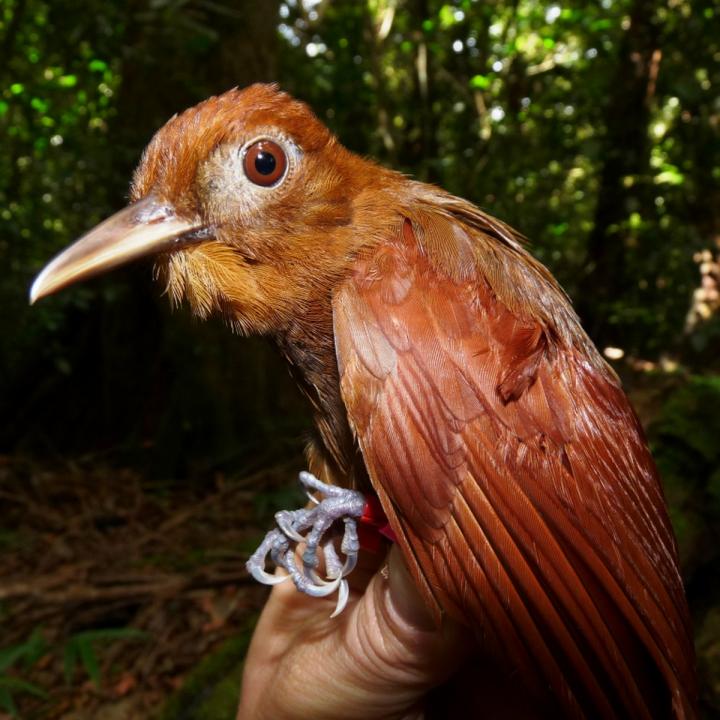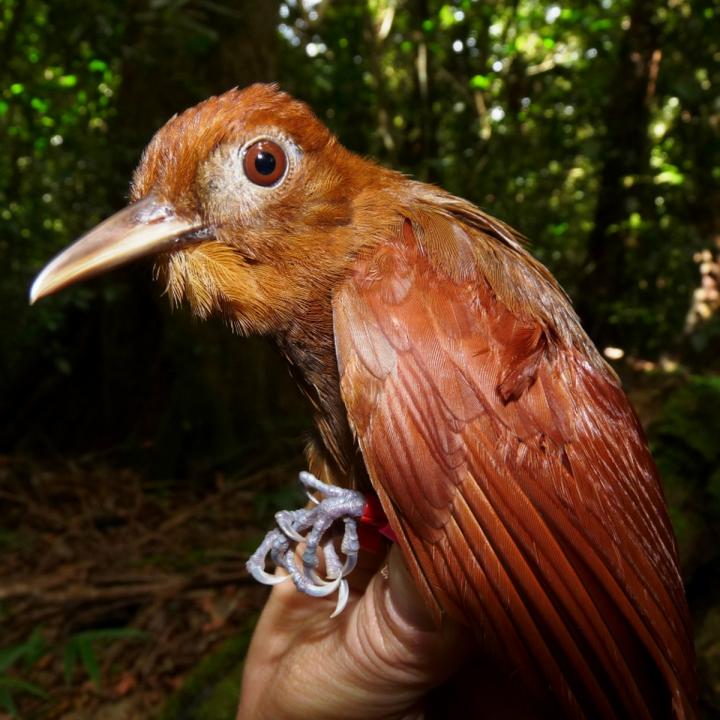
Credit: Courtesy of Sean O'Donnell/Drexel University
Army ants scare up a lot of food when they're on the move, which makes following them valuable for predator birds. But instead of competing and chasing each other off from the ant "raids," as scientists had thought, birds actually give each other a heads up when the ants are marching, according to a new Drexel University study.
For more than a decade — from 2005 until 2016 — Sean O'Donnell, PhD, a professor in Drexel's College of Arts and Sciences, observed army ant "raids" and the birds that follow them. He hoped to find out whether birds really were aggressive toward each other during the ant marches or whether they actually cooperated to access the food (other insects and bugs) that ants rustle out of hiding.
After observing 74 swarms in Costa Rica, it seems birds are much more likely to play nice with each other.
"Overall, the results strongly supported facilitation — species help each other to exploit shared resources," O'Donnell said of his study that was recently published in Biotropica.
In watching for the raids and the flocks that "attend" them, a key to avian cooperation may be what are termed "bivouac-checking" birds. These are birds that perch near the sites where army ants make their nests (bivouacs) and watch to see where and when the ants move. Birds that fall into that category include the ocellated antbird and the blue-diademed motmot.
The prevailing thought has been that these specialized birds liked to keep the ant colonies they watched to themselves, not allowing other species to horn in on their finds.
But a frequent high diversity of species in flocks following the ant columns showed O'Donnell that birds that didn't specialize in tracking army ants (like the migrant species Kentucky warbler) were allowed to join and hunt.
So when bivouac-checking birds see the movement of the columns and take off, other birds take the cue. They either know birds like the ocellated antbird follow ant columns or recognize vocalizations the specialized birds make when chasing the colonies.
"Birds may use each other as a way of finding army ant raids, which are very hard to locate in the forest because they are widely spaced and the ants are mobile," O'Donnell said. "Observations suggest some birds are attracted to other birds at raids, and birds may even follow each other when moving among raids of different ant colonies."
However, there did seem to be some bullies.
O'Donnell noticed some pairs of species were almost never found in flocks together despite, independently, being ant-chasers. That indicated that these bird species might chase each other off as competition, or just avoid each other entirely. Pairs that seemed to be unable to be around each other included the blue-throated toucanet and the brown jay, as well as the wood thrush and the white-eared ground sparrow.
"These antagonistic pairs were often species of very similar body size or feeding behavior," O'Donnell explained. "Perhaps these species do compete very strongly at army ant raids."
All in all, finding that birds largely work together to forage at army ant raids seems to demonstrate that cooperation is a better survival strategy than trying to keep food from the raids for their own species.
"Having other birds around may be an advantage because there are more eyes and ears to detect predators," O'Donnell said. "If the raid is hard to monopolize, and food is very abundant there, then the costs of allowing other birds to attend may be low, further favoring positive species interactions."
###
Media Contact
Frank Otto
[email protected]
215-571-4244
@DrexelNews
http://www.Drexel.edu/
Original Source
http://drexel.edu/now/archive/2017/June/Birds-Work-Together-to-Follow-Army-Ant-Hunts/ http://dx.doi.org/10.1111/btp.12452
############
Story Source: Materials provided by Scienmag





